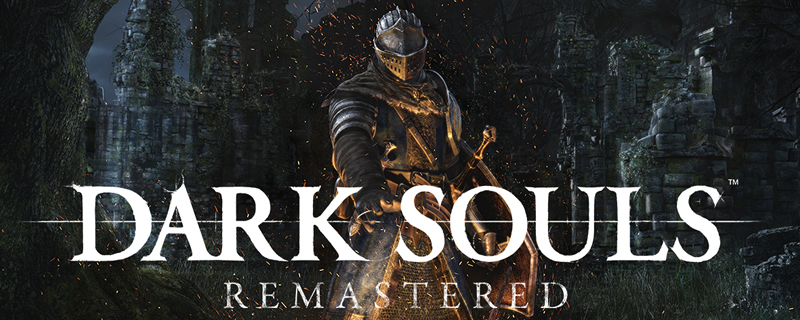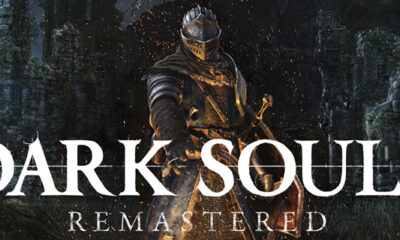Gaming
Race Through Centuries in the Ultimate Puzzle Challenge

Ever wondered what it would feel like to sprint through centuries, crack cryptic codes, and rewrite history—all in just one hour? Welcome to the world of immersive puzzle experiences where time doesn’t just tick… it twists. This isn’t your average afternoon activity. This is an adrenaline-charged mission where you and your crew are the only thing standing between chaos and a fractured timeline.
What Is a Time Travel Escape Room Really Like
Forget bland puzzles and static rooms. Time-travel-themed escape rooms take the experience to an entirely new dimension—literally. These rooms are designed to transport players across historical eras with each solved puzzle. One moment you’re deciphering symbols in an ancient temple, and the next you’re aligning futuristic tech inside a space station.
Set designers go all in—think flickering torches, ticking steampunk clocks, walls that slide open into hidden chambers, and soundtracks that thrum with urgency. Lighting shifts and sensory cues make every “time jump” feel authentic. Each room isn’t just a location; it’s a living slice of a different age.
The Puzzle Mechanics That Make You Feel Like a Time Traveler
Here’s where it gets addictively fun. Each puzzle is crafted to mimic challenges from that era. You might find yourself matching hieroglyphics, constructing Leonardo da Vinci’s inventions, or bypassing laser grids in a dystopian future.
Some clues demand lateral thinking, while others rely on teamwork or pattern recognition. What binds them together is how cleverly they simulate the feeling of “solving time.” One puzzle might represent rewiring a timeline, another restoring a lost artifact to its rightful place in history. The deeper you go, the more the storyline unfolds—and the stakes rise with every minute.
Why These Adventures Feel Like a Real-World Game Quest
If you’re a gamer, this is your dream come to life. Think of it as playing a live-action RPG, where you’re not just controlling a character—you are the character. The thrill of navigating complex story arcs, unlocking new worlds, and progressing through levels mirrors the rush of beating that impossible boss fight or uncovering a rare item.
You won’t be doing it alone either. Time-travel rooms are often built for group collaboration. That means shared “aha!” moments, collective frustration over red herrings, and full-blown celebrations when you finally crack the code that lets you jump to the next century. It’s an unbeatable mix of game strategy, friendship, and full-sensory immersion.
The Perfect Choice for Friends Who Want Something Epic
Looking for something unforgettable to do with your crew? This is it. Time-travel-themed puzzles aren’t just exciting—they’re legendary. One room might take you to a crumbling pyramid with hidden levers. Another might throw you into the Renaissance to decode a traitor’s journal. The details are rich, the stories are layered, and the entire experience feels like you’re starring in your own movie.
And for those who prefer their own dedicated adventure, a private escape room in NYC delivers an epic challenge without outside players breaking the vibe. It’s you, your team, and the ticking clock—no distractions, no spoilers, just pure focus and fun.
Jumping Between Centuries in a Single Hour
Time is your biggest enemy. You’re not just solving riddles—you’re racing the clock while leaping between ancient dynasties and future civilizations. Each completed puzzle unlocks a new “era,” so your adventure evolves with every breakthrough.
The best-designed time travel escape room doesn’t just test your wits—it turns every ticking second into a cinematic leap between ages. Just when you think you’ve got it, the setting flips, and suddenly you’re navigating a whole new set of challenges. It’s fast. It’s wild. It’s unforgettable.
FAQ
Do I need to know history to enjoy a time travel escape room?
Not at all. These rooms are built for excitement, not exams. You’ll get just enough context to feel immersed without needing a history degree. It’s more about exploration and creativity than memorizing dates.
How difficult are time-travel-themed escape rooms for beginners?
Most are designed with flexible difficulty levels. Game masters often provide hints when needed, so even first-timers can jump in without feeling overwhelmed. Think of it as a learning curve built into the fun.
Are time travel escape rooms scary or family-friendly?
They’re more thrilling than terrifying. Most time-travel themes focus on adventure, mystery, and fun. However, it’s always best to check the room’s rating—some might have darker or more intense moments.
Don’t Just Watch History—Escape Through It
There’s something primal about beating the clock while outsmarting the past, present, and future. Time-travel escape rooms take your group out of the ordinary and drop you into a story that’s rich, mind-bending, and unforgettable. So next time you’re looking for a real-world adventure that rivals your favorite game, grab your team, clear your mind, and prepare to race through centuries.
Because the clock is always ticking.
Gaming
Smart Casino Playing Habits That Experienced Players Follow on phlove

Playing online casino games can be very exciting, but if one goes into the game without learning from experienced players, things can go awry very quickly. New players may become frustrated, end up spending more money than they had intended, or become bored due to lack of informed practices.
Such platforms as phlove exist to ensure that the experience of playing casino games on the Internet is simple and enjoyable, but the line between stressful and stress-free experiences lies in the habits. Most experienced players observe certain habits and guidelines to ensure they play the games in a responsible and enjoyable way. Here’s an explanation in detail of the habits.
1. They Set a Clear Budget and Stick to It
Also, one of the things you will realize about professional players is that these players always have a set budget when entering a game session. Professional players never wing it when they are engaged in a game session; in other words, they are not driven by a compulsive desire to recoup their losses.
For instance, an experienced player may choose on phlove that he or she “will only play for 30 minutes tonight with just $20.” This way, the player will avoid any kind of stress, as long as he or she enjoys his or her gaming experience. This is often where beginners go wrong, choosing to bet more in order to somehow regain their lost dollars. This is often the fastest way to become frustrated.
2. They begin small when trying new games
Skilled gamblers know that no two games will be exactly alike. Though a gambler may have played several slot machines or table games, each one will have its own characteristics.
On phlove, a smart player begins with a small investment. They start by placing low stakes before increasing. It helps a smart player learn how the system operates. Additionally, by starting with low investment stakes, a smart player avoids the stress that new players commonly encounter.
3. They focus on games that match their skill levels
While the most visually appealing games are generally going to attract our interest, seasoned players select games that are more aligned with their current ability to win than with what looks most attractive to play.
For example, if you are familiar with slot machines, you could attempt table games with a higher level of difficulty, such as blackjack on phlove. You would certainly not try to play at higher-level games such as poker if you are not familiar with how they are played. Playing at a level that is suitable for your skills ensures the fun in gaming.
4. They keep score of who wins and who doesn’t
Not only do experienced players trust their instincts, but they also keep score. They keep track of wins, losses, and time spent playing to identify trends associated with playing.
This is a simple yet highly effective habit. On phlove, it doesn’t involve anything that complex, such as using spreadsheets, but simply an awareness of your playtime and what your results are. With consistent play, it’s possible to develop an awareness of which games you enjoy and which may not be your cup.
5. They Avoid Chasing Losses
One of the biggest noob errors is to chase a loss. Players usually have a very big desire to “win back” after a losing series.
Experienced game participants act just the opposite. They walk away, have some offline activities, and then clear their minds. The art of taking adequate breaks on phlove is very significant. This practice makes playing a source of enjoyment and keeps people from making game-related decisions based on their frustrations.
6. They Read Game Rules and Payouts
When it comes to games that the players have played before, experienced players make sure to check the rules and payouts for the new game.
In regard to phlove, it is a way to ensure that there will be no surprises in the game. This is integral in allowing the player to have some confidence in the various mechanics in the game. It also assists the player in knowing the effect that various components may have on the game, hence allowing them to make an informed decision.
7. They Use Bonuses Strategically
Bonuses may appear attractive, yet they are often fraught with terms and conditions that are rarely comprehended correctly. Seasoned players at phlove read all about the terms before accepting a bonus offer.
These characters utilize the bonus effect as a supplement to their strategy and are able to avoid being restricted by bonus conditions. They are able to keep entertainment as the focus rather than rewards.
8. They Take Breaks and Manage Time
Long gaming sessions without any pauses will lead to exhaustion and errors. Seasoned gamers game in a way that involves pauses, walk away, and refrain from gaming when distracted or tired.
This is especially true on phlove. This method is quite helpful because it allows players to take a break, reassess their playing session, and approach the games without any irritation.
9. They Remain Calm and Patient
Controlling emotions is critical when engaging in online casino betting. Experienced players would appreciate that losing temper and acting impulsively always results in poor outcomes.
They approach the session with patience. They observe patterns and make informed decisions. For the phlove game, patience will make sure that the session will not be stressful, no matter the luck involved.
10. They Know When to Stop
The most critical quality, however, is the art of knowing just when to quit. Seasoned players know how to set boundaries when playing on the site and maintain them. They log off while they are having fun, without trying to chase back their losses.
PHLove ensures ease of closure of a gaming session at any time, and those who adopt this practice walk away with satisfaction, pockets full and stress levels low.
11. They Reflect on their Gameplay
Skilled players will also reflect for several minutes on the last session on what has gone well and not gone well. Some questions may include:
- Was I able to stay on budget?
- Were the games a good choice for my skill level?
- Did I remain calm and get to enjoy this session?
This reflection exercise can benefit future meetings. A reflection on the game experiences on the platform ‘phlove’ will not only bring back good practices but also help avoid the repetition of mistakes.
Conclusion
Smart gaming in casinos has nothing to do with luck or becoming an instant winner, and everything to do with good habits. Experienced gamblers in phlove practice money management, starting off in the right way, playing the correct games, taking a break, and being patient.
These practices make online casino gaming stress-free and confusing to fun, controlled, and sustainable. Whether you are a person determined to get more out of phlove and make online casino gaming a happier experience for you, practicing this advice could make a huge difference in how game sessions can benefit you.
Always remember this: The best ballplayers aren’t always those who go after all victories—they are those who play intelligently, remain cool, and have fun playing.
Gaming
Dark Souls Remastered: Celebrating the Legacy Through Style and Fandom

Dark Souls Remastered continues to command a powerful presence in gaming culture, not only as a landmark action role-playing game but also as a symbol of perseverance, artistry, and identity for its community. From the crumbling walls of Lordran to the quiet moments spent at a bonfire, Dark Souls Remastered has shaped how players connect with virtual worlds. That connection no longer stops at the screen. For many fans, it extends into real life through collectibles, apparel, and themed merchandise that reflect their admiration for the series, and this is where curated merch platforms like Cubold play an important role.
Why Dark Souls Remastered Still Resonates With Players
Few games have achieved the cultural permanence of Dark Souls Remastered. Its design philosophy values mastery over convenience, asking players to engage deeply with mechanics, environments, and lore. Dark Souls Remastered does not rush its audience. It challenges them to slow down, observe, and adapt. This intentional pacing creates an emotional bond that lingers long after the final boss is defeated.
Because Dark Souls Remastered encourages personal interpretation and self-discovery, every player’s journey feels unique. That sense of ownership is one reason fans remain invested years later. It also explains why many players look for ways to express their connection to Dark Souls Remastered beyond gameplay, often through wearable or collectible items that symbolize their experience.
The Aesthetic Identity of Dark Souls Remastered
The visual language of Dark Souls Remastered is instantly recognizable. Gothic architecture, decayed armor, and haunting iconography combine to create a bleak yet beautiful atmosphere. Every symbol in Dark Souls Remastered, from bonfires to covenant emblems, carries meaning rooted in the game’s lore. These visuals have become iconic within gaming culture, making them especially well-suited for thoughtful merchandise design.
Merch inspired by Dark Souls Remastered is most compelling when it respects this aesthetic depth rather than treating it as surface-level branding. Platforms like Cubold focus on designs that align with the tone of Dark Souls Remastered, offering items that feel authentic to the world rather than generic. This approach resonates with fans who value subtlety and symbolism over loud branding.
Community Expression and Dark Souls Remastered Fandom
The Dark Souls Remastered community has always thrived on shared understanding. Players recognize each other through phrases, symbols, and references that outsiders might overlook. Wearing or displaying Dark Souls Remastered merchandise becomes a quiet signal of belonging, a way to connect with others who understand the struggle and triumph the game represents.
Cubold’s merch site caters to this type of fandom by offering Dark Souls inspired designs that speak directly to long-time players. Rather than focusing on mass-produced visuals, Cubold highlights concepts that feel personal to fans of Dark Souls Remastered. This creates a stronger emotional connection between the game, the merchandise, and the individual wearing it.
How Dark Souls Remastered Influences Lifestyle Merch
Dark Souls Remastered is not just a game people play; it is an experience that shapes taste, mindset, and even identity. Its themes of resilience, cycles, and quiet determination translate naturally into lifestyle merchandise. Apparel inspired by Dark Souls Remastered often reflects muted tones, minimalist designs, and symbolic imagery that fits seamlessly into everyday wear.
Cubold understands this crossover between gaming and lifestyle. By drawing inspiration from Dark Souls Remastered without overusing obvious visuals, the merch becomes versatile. Fans can represent their favorite game in a way that feels refined and intentional, appealing to those who appreciate both fashion and gaming culture.
Collectibility and Meaning in Dark Souls Remastered Merch
For many players, Dark Souls Remastered represents a personal milestone. Completing the game is often remembered as a defining gaming achievement. Merchandise connected to Dark Souls Remastered can serve as a tangible reminder of that accomplishment. When done thoughtfully, these items carry meaning rather than functioning as simple souvenirs.
Cubold’s approach emphasizes this sense of significance. Each Dark Souls Remastered–inspired piece feels designed for fans who understand the weight of the experience. This attention to meaning elevates the merchandise beyond novelty and transforms it into something lasting.
Why Fans Seek Curated Dark Souls Remastered Merch
The popularity of Dark Souls Remastered has led to an abundance of themed products across the internet, but not all of them reflect the spirit of the game. Discerning fans often seek curated platforms that prioritize quality and authenticity. Cubold positions itself as a destination for fans who want Dark Souls Remastered merch that aligns with the game’s tone and legacy.
This focus on curation matters. Dark Souls Remastered fans are known for their appreciation of nuance, and that same standard applies when choosing merchandise. Cubold’s selection speaks to players who value design integrity as much as gameplay mastery.
Dark Souls Remastered as a Cultural Icon
The influence of Dark Souls Remastered extends far beyond its original release. It has inspired countless games, discussions, and creative works. Its imagery has become shorthand for challenge and perseverance across gaming culture. As a result, Dark Souls Remastered–inspired merchandise holds a unique position, representing not just a game but a philosophy.
Cubold taps into this broader cultural relevance by offering merch that feels timeless rather than trend-driven. This makes Dark Souls Remastered designs appealing even years after a player’s first journey through Lordran.
Extending the Experience Beyond the Game
Dark Souls Remastered invites players to immerse themselves fully in its world, and many fans are reluctant to leave that world behind. Merchandise provides a way to carry a piece of that experience into daily life. Whether it’s apparel, accessories, or display items, Dark Souls Remastered merch allows fans to stay connected to the game’s themes and atmosphere.
Cubold serves this desire by bridging the gap between digital experience and physical expression. Its Dark Souls Remastered–inspired offerings allow fans to celebrate the game in a way that feels personal, meaningful, and enduring.
The Lasting Bond Between Dark Souls Remastered and Its Fans
The relationship between Dark Souls Remastered and its community is built on shared struggle, discovery, and respect for thoughtful design. That bond naturally extends into how fans choose to represent the game outside of play. When merchandise reflects the same care and intention as the game itself, it strengthens that connection and allows players to carry a piece of that experience into everyday life.
Cubold’s merch site complements the legacy of Dark Souls Remastered by offering Dark Souls–inspired merchandise that stays true to the game’s atmosphere, symbolism, and emotional weight. Rather than feeling mass-produced, Cubold provides fans with a refined way to honor a game that reshaped how they view challenge, persistence, and reward. In doing so, it helps ensure that the spirit of Dark Souls Remastered continues to live on, not just through gameplay, but through the daily lives of those who were shaped by it.
Gaming
Inhouse Dice 99 RTP Christmas Edition Bounties

Introduction
On December 19, Rollhub launches its Christmas Edition Dice Bounties, centered around the platform’s inhouse Dice 99 game with a 99 RTP. Designed and operated entirely within the Rollhub ecosystem, Dice is one of the platform’s core provably fair games, offering fast gameplay, precise control, and transparent outcomes.
This seasonal promotion introduces a structured bounty system that rewards wagering activity across multiple participation levels. By combining festive visuals with clearly defined objectives, the Dice Bounties campaign reinforces Rollhub’s focus on in-house development, predictable RTP performance, and straightforward reward mechanics throughout the holiday period.
Dice Special Bounty High Wager Reward Challenge
The Special Bounty tier is designed for players aiming for higher wagering volume and premium rewards. With a $20,000 wagering requirement, participants can earn a $200 bounty reward, making this the highest-tier challenge within the Dice Christmas Edition promotion.
This tier highlights the advantages of a 99 RTP in-house game, where increased activity is aligned with clearly structured rewards and stable, predictable mechanics.
Dice Standard Bounty Entry Level Promotion
For players looking for an accessible entry point, the Standard Bounty offers a balanced participation option. By completing a $100 wagering requirement, users can earn a $1 bounty reward, encouraging steady engagement without a high initial commitment.
This tier serves as the foundation of the Dice Bounties campaign, enabling a wide range of players to participate while benefiting from the game’s high RTP structure.
Dice Token Bounty Rollhub Reward Integration
The Token Bounty integrates Dice gameplay directly with the Rollhub reward ecosystem. With a $40 wagering requirement, players can earn 2,026 Rollhub tokens, adding an additional incentive layer beyond traditional cash-based rewards.
This option supports long-term engagement by allowing earned tokens to be used across the Rollhub platform, strengthening the connection between inhouse games and platform-wide incentives.
Conclusion
The Christmas Edition Dice Bounties combine in-house game development, a 99 RTP framework, and clearly structured bounty tiers to deliver a transparent and engaging seasonal promotion. With multiple participation levels and reward formats, Rollhub allows players to choose their preferred strategy while maintaining full visibility into how rewards are earned.
To stay updated on ongoing promotions, upcoming bounty opportunities, and additional bonus releases, users are encouraged to join the Rollhub Telegram group, where updates and exclusive offers are shared regularly. The Dice Bounties promotion is live as of December 19 and available to all Rollhub users.
-

 Finance3 years ago
Finance3 years agoProfitable Intraday Trading Advice For Novices
-

 Gaming3 years ago
Gaming3 years agoSubway Surfers Unblocked | Subway Surfers Unblocked 66
-

 Internet3 years ago
Internet3 years agoWelcome to banghechoigame.vn – Your One-Stop Destination for Online Gaming Fun!
-

 Gaming3 years ago
Gaming3 years agoMinecraft Unblocked Games 66 | Unblocked Games Minecraft
-

 Gaming3 years ago
Gaming3 years agoGoogle Baseball Unblocked | Google Doodle Baseball Unblocked 66
-

 Internet2 years ago
Internet2 years agoPremium Games Unblocked: Unleash Your Gaming Potential
-

 Gaming3 years ago
Gaming3 years agoTunnel Rush Unblocked | Tunnel Rush Unblocked 66
-

 Gaming2 years ago
Gaming2 years agoPixel Speedrun Unblocked Games 66



























